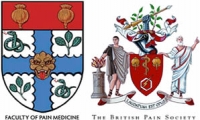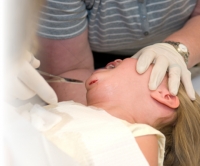Pain in Children is Different course



This session describes the incidence, causes and effects of pain in infants, children and young people and the basic physiological mechanisms operating in both acute and chronic pain.
Learning Objectives
By the end of this session you will be able to:
- List the incidence, causes and effects of acute pain in children
- List the incidence, clinical presentations and effects of chronic pain in children
- Describe basic nociceptive mechanisms and the influence of child development
- List the differences between inflammatory and neuropathic pain
- Describe the physiological basis for chronically maintained pain
Children's pain is often poorly managed, both in hospital settings and in the community, leading to unnecessary suffering and short-term and long-term complications.
Suellen held paediatric anaesthesia consultant posts in Australia, obtained a Masters in Pain Medicine and was a Foundation Diplomate of the Faculty of Pain Medicine, Australian and New Zealand College of Anaesthetists in 1999. She subsequently completed an MSc and PhD in developmental neurobiology of pain in London.
Her current research interests include developmental analgesic efficacy and safety and long-term effects of pain in early life.
Suellen has contributed to evidence-based acute pain guidelines, is an Editor of the Oxford Textbook of Paediatric Pain, and is a content author on the e-PAIN project.


Richard is involved in clinical pain management, clinical and laboratory research, and has lectured and published extensively on the subject of pain mechanisms and management.
He is the Clinical Lead of the children’s Pain Management Service at Great Ormond Street. He is a founder member of the UCL Paediatric Pain Research Centre; a collaboration between clinicians and scientists, an Examiner for the UK Fellowship of the Faculty of Pain Medicine and Chair of the Medicines for Children Research Network (MCRN) Pain & Palliative Care Clinical Studies Group.
Richard is a module editor and content author of sessions of the e-PAIN project.

- Anaesthesia Fundamentals | Anatomy | Bones And Joi...
- Posted By eIntegrity Healthcare e-Learning
- Posted Date: 2024-11-25
- Location:Online
- This session describes the anatomy of the upper and lower limbs, concentrating on the bones and joints. Particular attention is paid to those bones and joints that are of importance to the anaesthetist.
- Anaesthesia Fundamentals | Anatomy | Facial Skelet...
- Posted By eIntegrity Healthcare e-Learning
- Posted Date: 2024-11-25
- Location:Online
- This session describes the bones of the facial skeleton and skull vault. The important muscles that move the mandible are described. The classification and positions of fracture lines commonly seen following trauma to the face and surgical osteotomy are a
- Anaesthesia Fundamentals | Anatomy | Spine Part 2:...
- Posted By eIntegrity Healthcare e-Learning
- Posted Date: 2024-11-25
- Location:Online
- This session covers the anatomy of the sacrum, coccyx and sacral hiatus. It describes the intervertebral discs and spinal ligaments, and the vertebral levels of some of the surface markings of the body. The different types of spina bifida are reviewed.
- Anaesthesia Fundamentals | Anatomy | Spine: Cervic...
- Posted By eIntegrity Healthcare e-Learning
- Posted Date: 2024-11-25
- Location:Online
- The session covers the anatomy of the bones of the vertebral column in the cervical, thoracic and lumbar regions.
- Anaesthesia Fundamentals | Anatomy | Boney Orbit a...
- Posted By eIntegrity Healthcare e-Learning
- Posted Date: 2024-11-25
- Location:Online
- Applied anatomy of the orbit and its extraocular contents.






